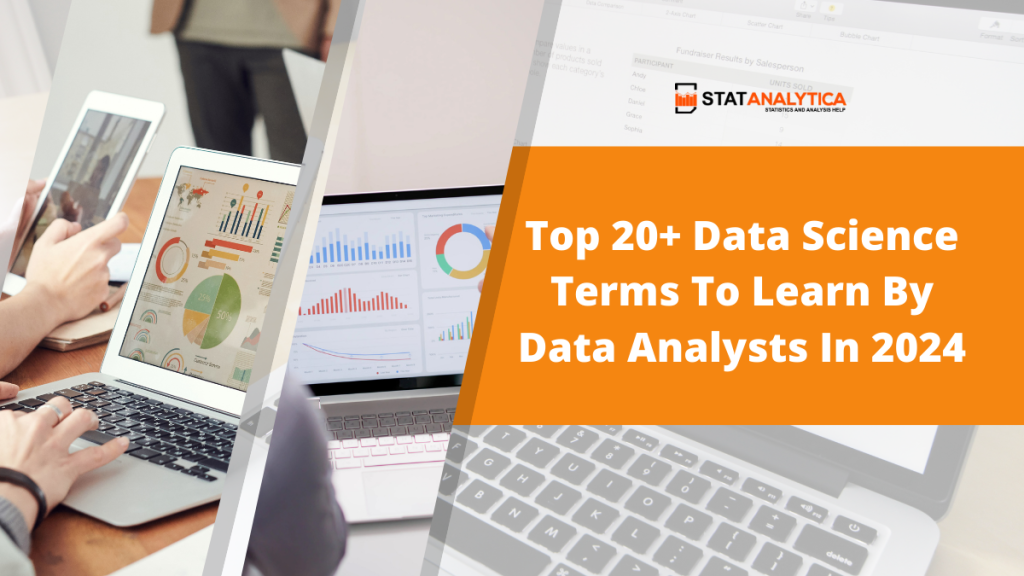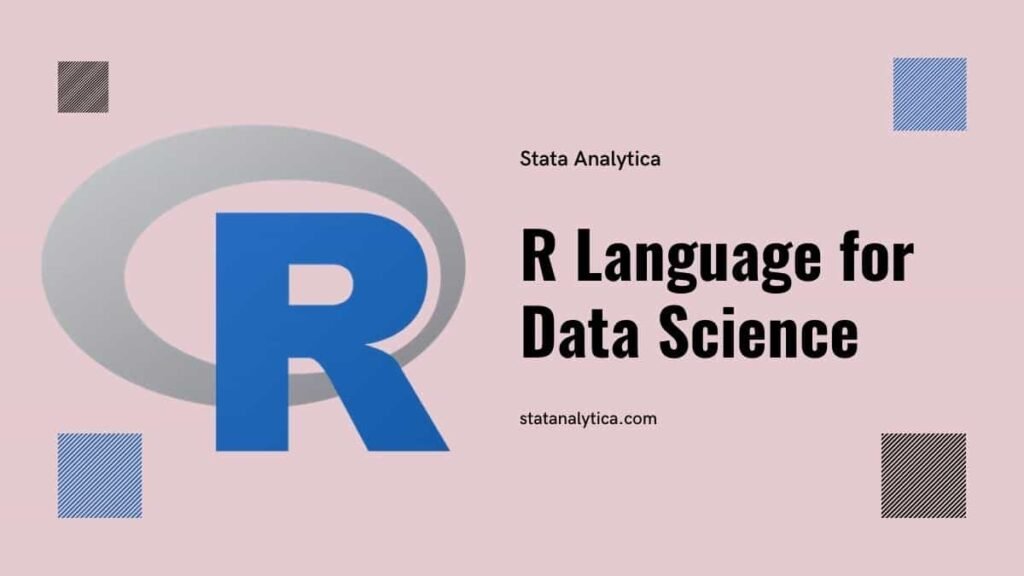Suppose you are locked in a huge home that has a number of rooms. Now you have to come out of the home. Quite difficult to navigate? Yes!! Because there is always the possibility of losing a lot of time. Right? Similarly, data science is a huge field in which there are a number of data science terms. And it is always best if you learn them effectively to understand the complexity of data science concepts better.
Also, a wise man once said, “the best way to understand a subject is first to learn its terms.”
So, today, we’ll go over some basic and frequent data science terms that will not only help you learn about but also let you do so in the best way.
List of 20+ all-time favorite data science terms
Table of Contents
We have divided these amazing data science terms into three categories to make them easier to learn. That is the most used term, the least used term, and terms used on a daily basis. Also, we put them in alphabetical order and included easy examples after each data science terminology to show how to use them.
So, let’s check them!
Most used data science terms:
Algorithm
A collection of instructions with a known mathematical expression that can be input into a computer to solve a problem or complete a task called an algorithm. Two widely used methods are linear and logistic regression.
Use Case: “The team mostly stuck when they’re applying the algorithms to develop the project.”
Application Programming Interface (API)
According to this data science language, a software intermediate offers a way for two independent programs to interact with one another. It is also an application’s connection interface via which another application may communicate.
Like, the Facebook application provides several APIs through which other smaller applications can connect and use Facebook services.
Use Case: “Facebook’s API developing members try their best to help better serve their clients.”
Business Insight (BI)
BI is a set of methods, tools, technology, and even data that an organization uses to develop insights and ideas that may drive growth.
Use Case: “With that much Business Intelligence, it’s no surprise that Mark’s company doubles their sales every year.”
Big Data
Any form of data that is too huge to fit into a single computer is called big data. Big data differs from typical little data in quantity and the speed with which it may be processed and in the variety of forms it can take.
Use Case: “As more people and devices come online and become more linked, we will have more big data.”
Correlation
This is one of the data science terms that estimates how closely one set of values connects to or is influenced by another set of values. When a rise in the first set leads to an increase in the second set, it leads to a higher correlation. When a rise in the first set causes a reduction in the second set, the correlation is negative or weaker. Finally, we record a zero correlation when a change in the first set does not affect the second set.
Use Case: “Everyone knows the Pearson Coefficient is the most extensively utilized correlation coefficient on the planet.”
Data Exploration
This describes the process of analyzing and examining massive data sets with machines to discover relationships between variables. Once detected, this link may use to develop models or give business insights.
Use Case: “Companies must first perform data mining to properly execute the tasks.”
Outlier
Any data point shown far away from the other data points is an outlier. We encounter them most often when there is a significant measuring mistake.
Use Case: “Frank uses for the data measurement as there are the outliers that plot on the graph.”
| Also Check: Data Science Projects For Beginners |
Least Used Data Science Terms:
Bootstrapping
Any test, measure, or technique used to split a huge dataset into smaller subsets with a high likelihood of replacement falls under this category.
Use Case: “We had to undertake bootstrapping to learn the accuracy of the July sales dataset properly.”
Deep Learning
This falls under the list of data science terms. It is the process of developing models that progress from addressing simple issues. These are also diving into more complicated ones by combining many neural networks.
Deep learning models can execute face recognitions because they learn basic patterns to detect complex characteristics.
Use Case: “Frank was recently recognised for developing one of the best deep learning models.”
Gradient Descent (GD)
GD is an iterative optimisation procedure for minimizing the cost function of a dataset. Whether it’s also a complete batch or simple GD, the method iterates until the best parameters find for minimizing the error.
Use Case: “Using gradient descent to create a cost function is not a particularly exciting activity.”
Overfitting
This happens when a model takes too much information from the training data and none from the testing data. The resultant model works well in training but fails in testing.
Use Case: “Their new model failed to owe to overfitting.”
Unstructured Data
Unstructured data does not fit into any preset model and frequently store in a database.
Use Case: “We won’t be able to make any significant progress until we’ve sorted all this unstructured data.”
Underfitting
When a model or algorithm supply with too little data, this is underfitting. A model that is under fitted is often unsustainable because it cannot be properly prepared.
Use Case: “The graph just displays a straight line; are we dealing with an underfitting model here?”
Web Scraping
The technique of getting useful data from a target website refers to web scraping. It also requires the creation of scraping scripts and the use of proxies that allow for proxy control while avoiding IP banning.
Use Case: “Every serious and satisfaction-oriented brand must undertake some sort of web scraping regularly.”
Frequently used data science terms:
Data Analysis
This field of data science identifies patterns using statistical methods and reliable data to answer both past and current queries.
Use Case: “Data analysis helps the organization to increase their customer happiness.”
Dataset
A dataset refers to a collection of data that has been organized into some form of structure. For example, corporate data in a database pool.
Use Case: “To more accuracy of the result, you must put one dataset at a time for analysis.”
Data Visualization
This is the process of transforming data into understandable visualizations like charts, graphs, and scatter lines.
Use Case: “NumPy and Pandas are two of our favorite Python packages for data visualization.”
Data Modeling
The process of converting raw data into predictive, relevant, and actionable information termed as data modeling. Modeling data also requires predicting and describing the data’s results.
Use Case: “Data modeling is one of the sets in the data processing that is massive.”
Reinforcement Learning
The use of trial-and-error or reward-and-punishment strategies to induce unsupervised machine learning refer to reinforcement learning.
Use Case: “With reinforcement learning, the new chess game model should show optimal performance in just over a week.”
Sample
This is one of the frequently used data science terms. And it refers to a subset of a bigger dataset or a set of data points that we may access at a given time.
Use Case: “To develop a perfect model, always choose the perfect sample size.”
Testing & Training
This is an important part of machine learning, and it lists initially feeding the model with the training dataset. The model can then evaluate to determine if it can properly predict desired outcomes after ideal results.
Use Case: “We’re still in the training and testing phase of the new model.”
Bonus Point
What are the top 3 data science tools preferred by data analysts?
Scikit-Learn
Let me tell you, implementing a commonly used tool for analysis and data science is an extremely basic and specific strategy. The Scikit-Learning framework can create entirely in Python. These use to put machine learning algorithms into action.
Scikit-Learn is a strong choice for supporting several machine learning features. These are regression, data preparation, classification, clustering, dimensionality reduction, and more.
BigML
It is another frequently used data science tool. BigML offers a completely interactive, cloud-based graphical user interface that is ideal for processing machine learning algorithms.
This solution also delivers standardized software for industrial requirements by utilizing cloud computing. Companies aim to apply machine learning algorithms throughout their business with their service.
SAS
SAS is one of the data science tools that aims particularly for statistical operations. Therefore, it is a closed-source program. It also employes by all big companies to get help with data analysis. This application uses the SAS programming language, which is ideal for statistical modeling.
This is another tool among experts and businesses that use for developing reliable commercial software. SAS provides several statistical libraries that you may use as a data scientist to model and organize your data.
Let’s conclude up!
Data science is a wide area that is growing by leaps and bounds every day. It links to artificial intelligence (AI) and machine learning (ML). And both of which are seeing rapid advancements in their respective fields. The data science terms do not end here; this is only an introduction to familiarize you with the basics. More is on the way. So, keep on learning with StatAnalytica to get advanced topic learning materials.
Frequently Asked Questions
What are the five steps of data science?
A summary of the five steps is as follows:
– Ask an engaging question.
– Getting reliable data.
– Exploring the information.
– The data is being modeled.
– The outcomes must communicate and visualize.
What is another word for data science?
Many statisticians, like Nate Silver, have claimed that data science is simply another term for statistics.


